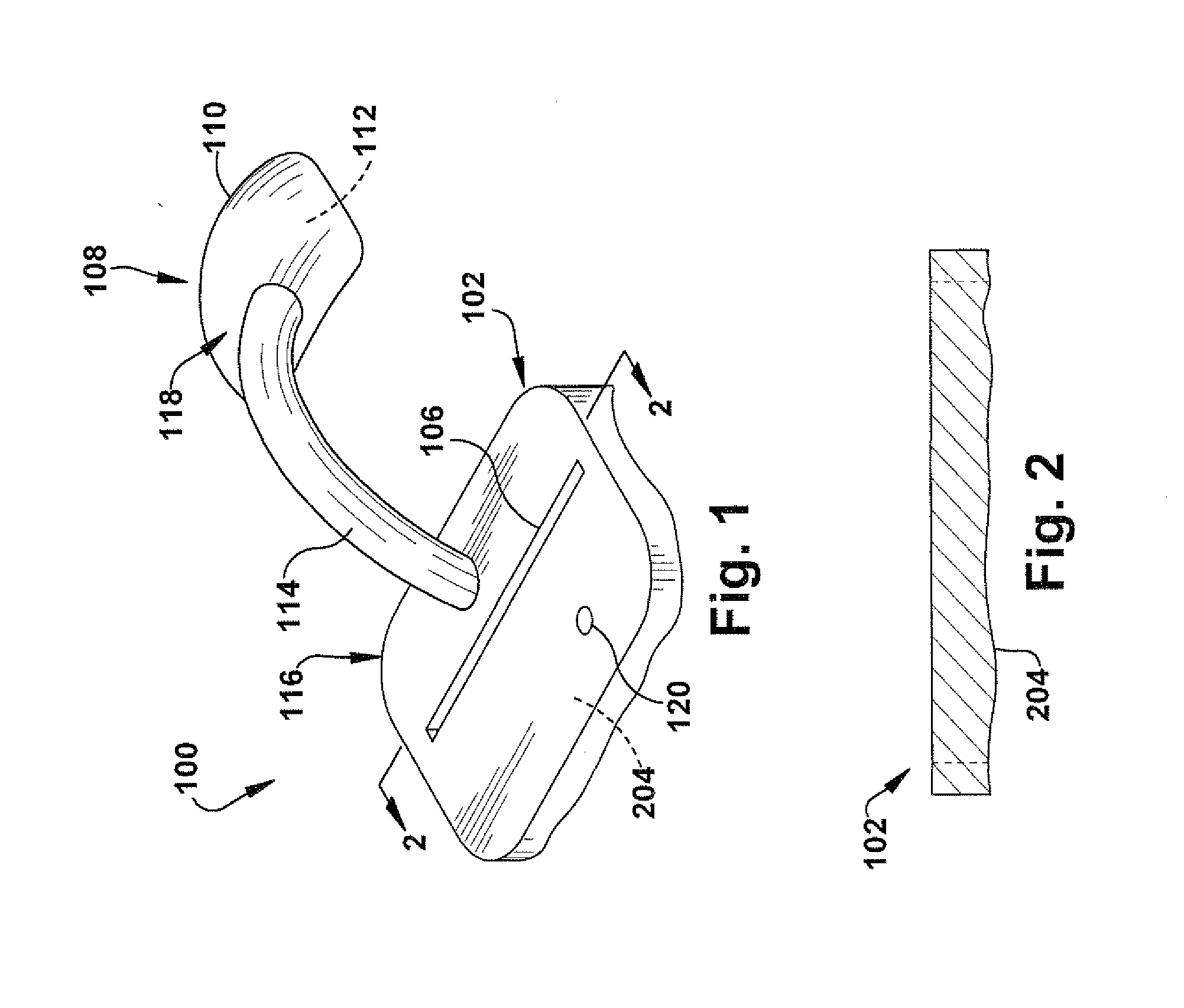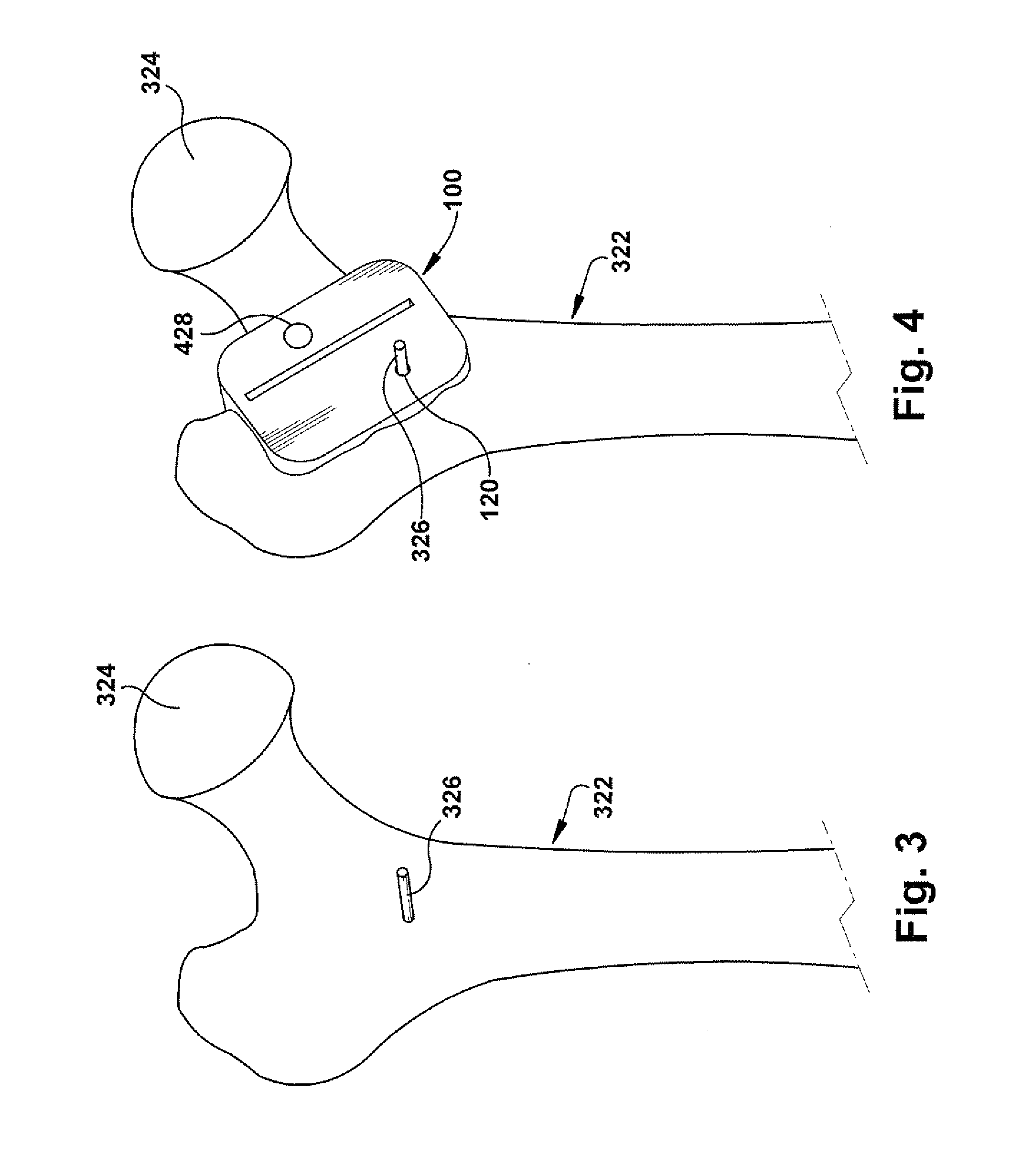Positioning apparatus and method for a prosthetic implant
a prosthetic implant and positioning apparatus technology, applied in the field of positioning apparatus and method of prosthetic implants, can solve the problems of reduced precision of traditional multi-use osteotomy templates, inconvenient operation, and difficulty for surgeons to determine the precise location of this osteotomy
- Summary
- Abstract
- Description
- Claims
- Application Information
AI Technical Summary
Problems solved by technology
Method used
Image
Examples
Embodiment Construction
[0018]In accordance with the present invention, FIG. 1 depicts a schematic view of a positioning apparatus 100 for guiding resection of a patient tissue (not shown) and guiding placement of a prosthetic implant component (not shown) in a desired implant position with respect to the resected patient tissue. The patient tissue is shown and described herein as a femur and the prosthetic implant component is shown and described herein as a femoral prosthetic hip component, but the patient tissue and corresponding prosthetic implant component could be any desired types such as, but not limited to, hip joints, shoulder joints, knee joints, ankle joints, phalangeal joints, metatarsal joints, spinal structures, long bones (e.g., fracture sites), or any other suitable use environment for the present invention.
[0019]The positioning apparatus 100 includes a locating block 102. The locating block 102 includes a mating surface (204, shown in cross-section in FIG. 2), the mating surface being cus...
PUM
 Login to View More
Login to View More Abstract
Description
Claims
Application Information
 Login to View More
Login to View More - R&D
- Intellectual Property
- Life Sciences
- Materials
- Tech Scout
- Unparalleled Data Quality
- Higher Quality Content
- 60% Fewer Hallucinations
Browse by: Latest US Patents, China's latest patents, Technical Efficacy Thesaurus, Application Domain, Technology Topic, Popular Technical Reports.
© 2025 PatSnap. All rights reserved.Legal|Privacy policy|Modern Slavery Act Transparency Statement|Sitemap|About US| Contact US: help@patsnap.com



